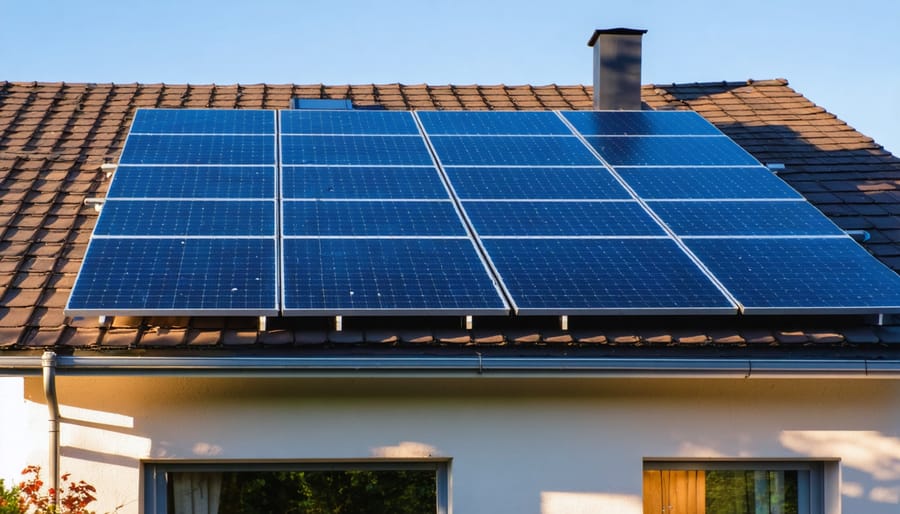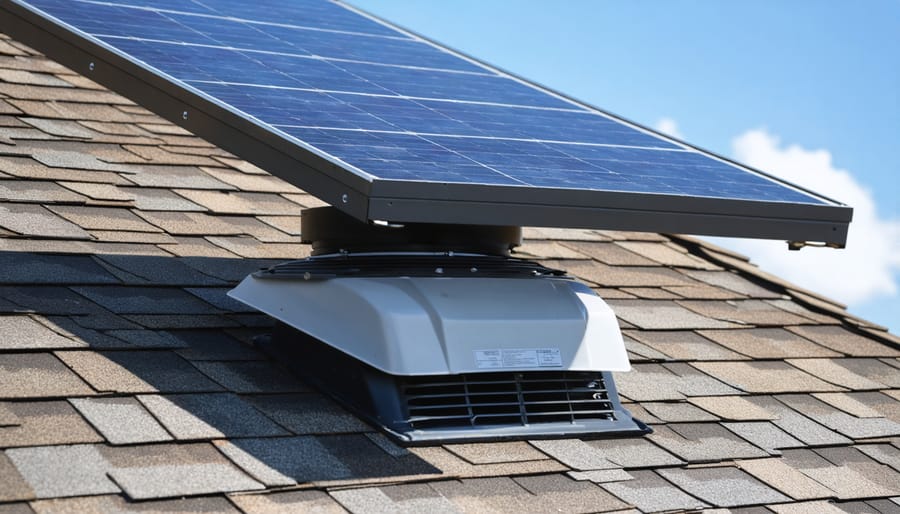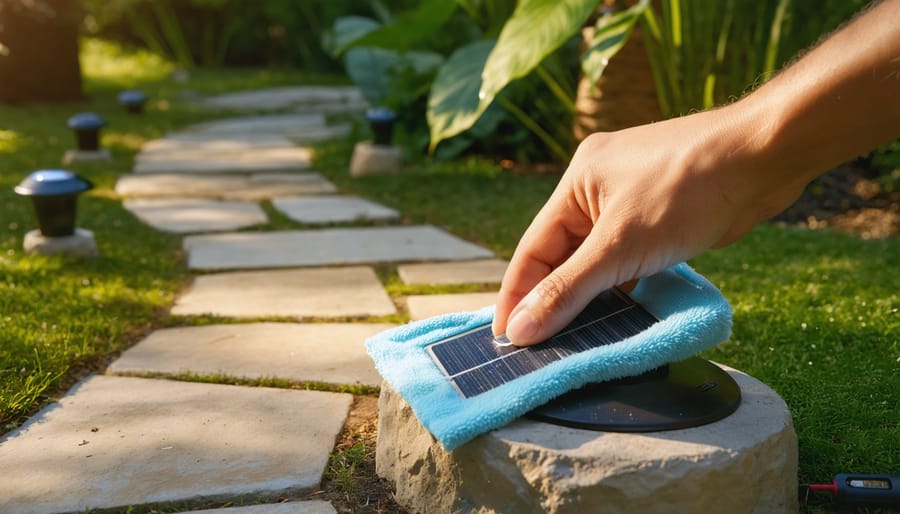How to Store Solar Pool Cover
Updated:

It is important to store a solar pool cover properly to ensure its longevity and effectiveness. The method for storing your solar pool cover depends on how long you want to keep it.
Use a solar reel system for in-ground pools or solar cover saddles for above-ground pools for short-term storage.
A thorough cleaning and drying process is necessary for long-term storage before folding and storing your cover in a cool, dry place.
In this article, we provide comprehensive guidelines on how to store your solar pool cover to maximize its durability and effectiveness.
Let’s dive into the details, starting with temporary storage.
How To Temporarily Store Your Solar Pool Covers?

When you need to remove your solar pool cover for swimming or maintenance, proper temporary storage is essential to keep it clean and undamaged.
Here are tips for short-term storage:
- Use a solar reel system to roll up the cover for in-ground pools. Attach the body and simply roll it onto the reel, then roll the unit out of the way.
- For above-ground pools, install solar cover saddles on the pool wall. Attach the cover to the unused solar saddle so it stays up and out of the way.
- For cleaning purposes, lay the cover on a clean, dry spot like pavement or a patio, not on grass where debris can collect. Use a soft push broom to clean the top surface of the cover.
- Fold loosely or roll up and tie with straps to contain it without creasing or damaging the bubbles. Use a safety pool cover bag to store the rolled cover upright and outside the direct sun.
- Avoid putting heavy objects on the cover when stored. Weight can damage the air bubbles.
- Use tie-downs or weights only along the edges to keep the cover from blowing away. Avoid concentrated weight.
- Check for rips, holes, or tears before reinstalling and make repairs to prevent further damage.
How to Properly Store Your Solar Pool Covers for the Long Term?
As the end of summer nears and cooler temperatures set in, storing your solar pool cover properly is crucial to ensure it survives the undamaged winter.
Solar covers left dirty, damp, or unprotected over winter can develop mold, mildew, holes, tears, and even rodent damage.
Follow these steps to keep your solar cover in great shape for the next pool season.
Step 1. Thorough Cleaning for Long-Lasting Covers

Thoroughly cleaning the solar cover before proper storage is essential for protecting its condition over winter.
- Remove the solar pool cover carefully, avoiding rough surfaces to prevent damage. Lay it flat on a clean, dry surface like concrete for cleaning.
- Spray off loose debris using a high-pressure garden hose. Prepare a cleaning solution of warm water and mild detergent for stubborn stains, optionally adding a bit of muriatic acid.
- Gently scrub both sides of the cover with a soft pool brush or cloth using the cleaning solution. Avoid using excessive pressure or abrasive brushes. Check for any damage, noting areas that need patching.
- Rinse both sides thoroughly with clean water to remove all cleaning solutions, as residual chemicals can degrade the material.
Step 2. Proper Drying for Mold Prevention
It’s critical to dry the entire surface of the cover before storage fully. Any remaining moisture can lead to mildew, mold, discoloration, and deterioration over months of storage.
- Lay the cover flat in a sunny spot to air dry completely. Flip it over periodically to dry both sides.
- You can use a leaf blower on the lowest setting to help speed up the drying process. Keep it 6 inches above the cover and move continuously to prevent any damage to the bubbles.
- Check carefully for any remaining wet spots or puddles, which can promote mold growth. Run your hand over the entire surface to feel for moisture.
- The drying time depends on the cover size, material thickness, humidity, and weather conditions. It could take several hours to fully dry.
- The cover is ready for storage when no moisture remains anywhere on the surface. You should not be able to feel any dampness.
Step 3. Folding the Cover for Compact Storage

Once the cover is completely dry, properly fold it to make a compact bundle that’s easier to handle and takes up less storage space:
- First, fold the cover half lengthwise along its central seam for rectangular covers to reduce the size.
- Next, fold it from both sides into thirds or quarters until you have a tight, uniformly folded panel approximately 2-3 feet wide.
- For round covers, start rolling from the outer edge toward the center. Stop periodically to fold the sides in toward the middle as you roll.
- Continue rolling and folding until you have a tightly rolled cylinder shape. This prevents loose folds from unraveling.
- Try to remove as much excess air as possible when folding or rolling. This keeps the bundle tighter.
Step 4. Inspect and Patch Any Damage
Before storing the cover, inspect it closely for any:
- Small holes, tears, thin spots, or breaches through the top surface. Even pinholes can expand over time.
- Bubbles or blisters in the material may indicate delamination issues.
- Use a solar cover patching kit to repair holes, tears, or thin areas according to package directions. This prevents further damage over storage time.
- Trim off any loose material for delaminated areas, then use patching cement to adhere the layers together.
Step 5. Secure Wrapping and Storage
To protect the folded cover from dirt, moisture, pests, and damage while in storage:
- Place the folded/rolled cover inside a large plastic storage bag, tarp, or sheeting. Polytarps work very well to waterproof and protect.
- Before sealing, squeeze out excess air from the bag/tarp to keep the cover tightly packed.
- Completely seal the storage wrap with duct tape, zip ties, bungee cords, or tie-downs, depending on the type used. Make sure it’s closed on all sides.
- Year-round, store the sealed cover in a shed, garage, basement, or other cool, dark, and dry location. Avoid attics with extreme temperature swings.
- You can also store it upright in a tightly sealed trash can or barrel. Add mothballs to deter mice and rodents from nesting or chewing on the cover. Be sure to air it out later before reinstalling.
- For solar pool covers on a reel system, cover the entire reel frame and cover it tightly with a weatherproof tarp. Secure with bungee cords or ropes. Store the covered reel somewhere shaded and protected from sun, rain, snow, etc.
Following proper solar cover winter storage guidelines helps ensure your cover stays in great shape and lasts many years.
How Not to Store Your Solar Pool Cover This Winter?
After a long summer of pool days, the last thing you want is a shredded, moldy solar blanket come springtime. Avoid these common mistakes when storing your solar blankets or bubbles this winter:
Don’t: Leave it Sitting Out in Your Yard
Rolling up your solar cover and leaving it exposed in the yard may seem convenient, but wind, rain, snow, and UV rays will steadily degrade the material. Rodents may start nesting in it, or dogs could chew on it.
Do: Seal It Up Inside a Storage Bag or Bin
Don’t: Toss it in the Attic
Extreme hot and cold temps in unconditioned attics can severely damage the bubbles in solar covers. They can also promote moisture buildup.
Do: Find a Storage Area That Stays Between 60°F and 80°F
Don’t: Ignore Holes and Rips
Even tiny holes will expand into major rips over time. Inspect closely for damage and patch with a specialty solar cover adhesive kit before storage.
Do: Repair Any and All Rips, No Matter How Small
Don’t: Leave Debris, Grime, and Gunk
Leaving dirt, leaves, and mineral deposits traps moisture and reduces light permeability. Always scrub the cover completely clean before storage.
Do: Gently Wash Both Sides to Remove All Debris and Buildup
Don’t: Toss in Crumpled Mess
Improperly folding leads to excess material and creases. Neatly fold along seams into a tight, uniformly stacked bundle secured with straps.
Do: Fold/Roll Tightly from Sides to Minimize Loose Material
Don’t: Weigh it Down with Stuff
Crushing weight damages the fragile air bubbles needed for insulation and heating. Always store flat or upright without objects placed on top.
Do: Allow Cover to Sit Freely Without Added Weight
By following these methods, you can make sure that your pool cover remains in top condition, so you don’t have to invest in a new solar cover when the next swim season arrives










